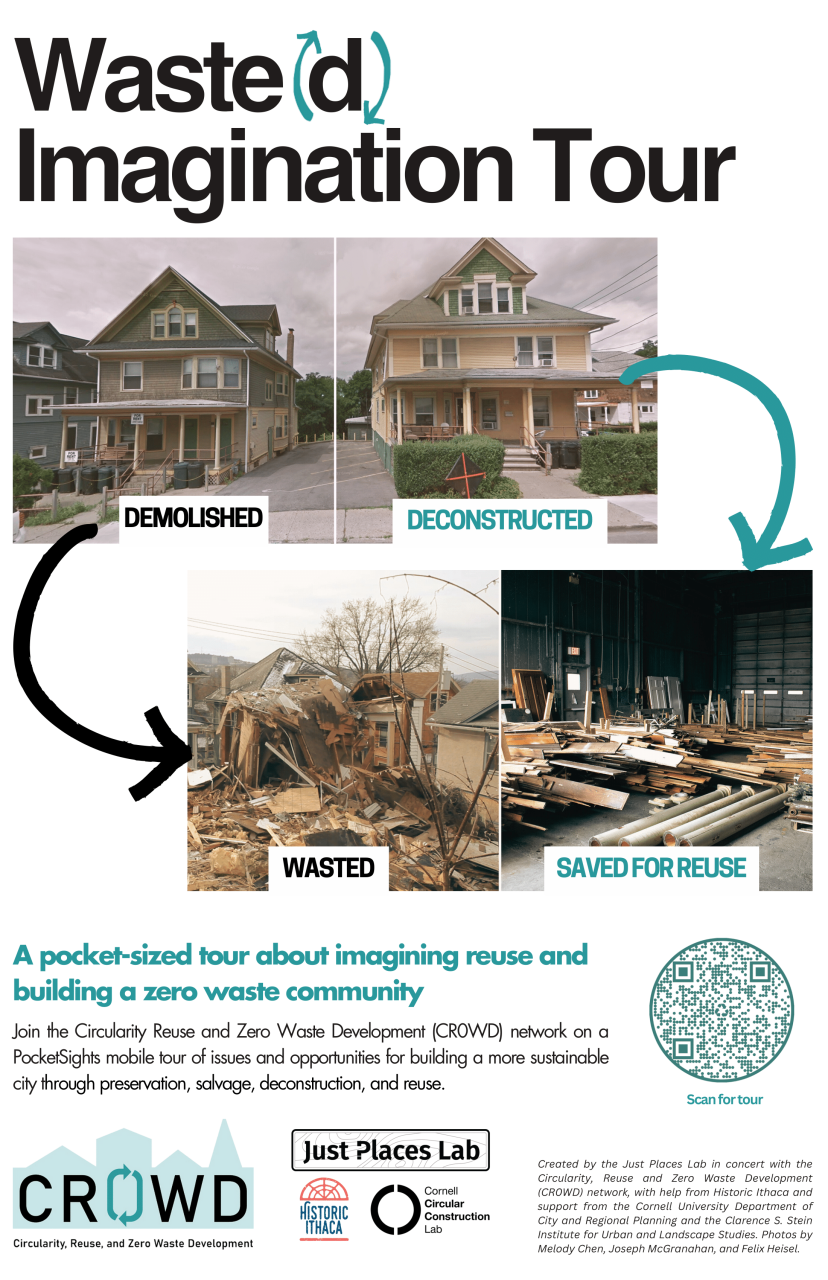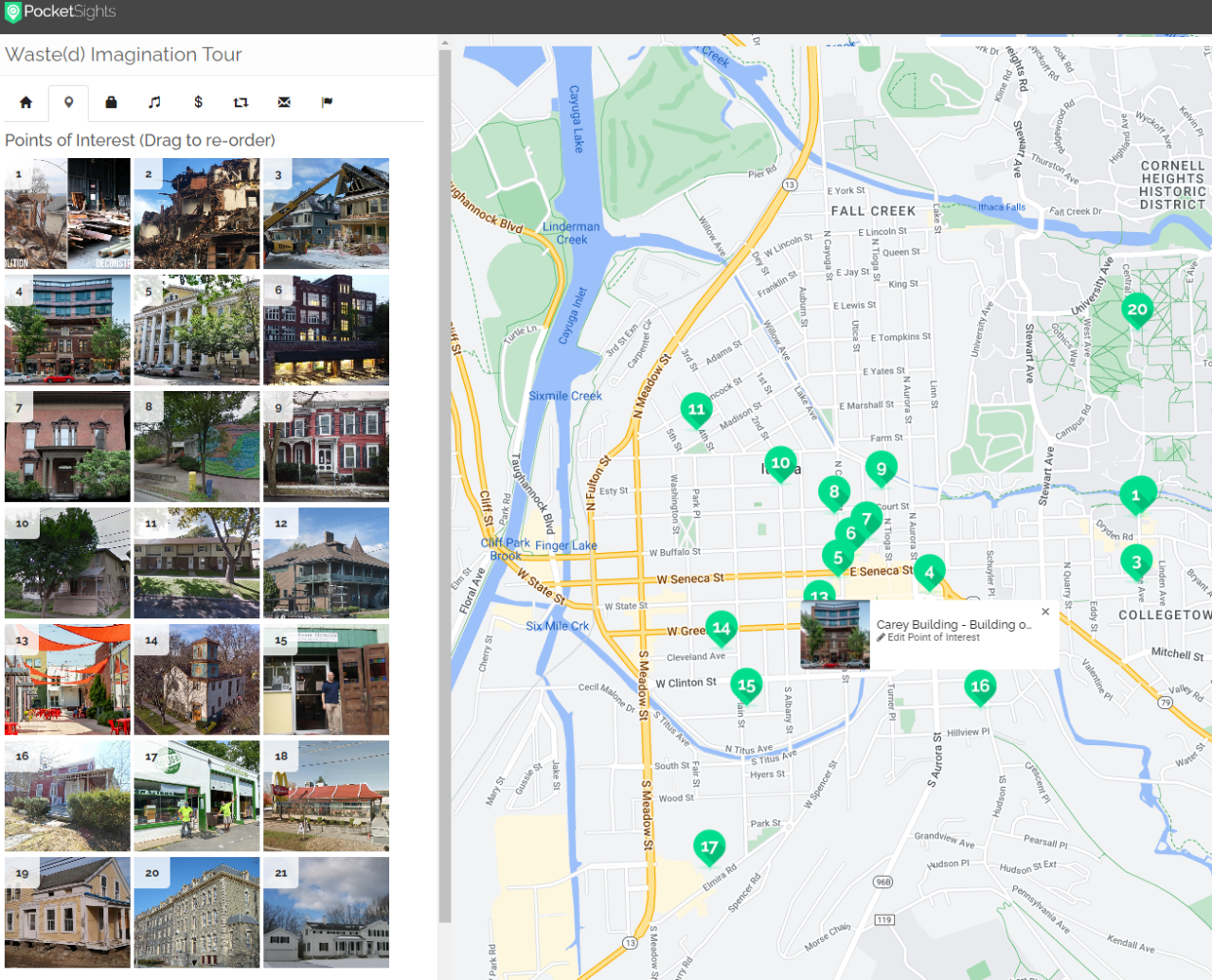Waste Imagination: How City Landscapes Can Be Remade
2022 - Ongoing
The Just Places Lab seeks to illuminate the ways in which city planning and visual media can aid in the transformation of public imagination about our relationships to waste, the built environment, and care of places. This series of exhibitions and research projects funded with a grant from the Clarence S. Stein Institute for Urban and Landscape Studies reimagined building construction and demolition debris as materials for construction of new, more socially just places. This project also traces the remediation of a massive municipal solid waste landfill into a park of enormous ambitions and proportions.
Waste(d) Imagination Tour
Is it Waste Imagination or Wasted Imagination? With shifts in public imagination, city policies, and practices within design, planning, and construction, we can rethink waste completely. When buildings are demolished, their components end up in the landfill. That's Wasted Imagination. If cities become circular systems, waste is eliminated. Instead of throwing buildings away, buildings and building materials can be saved to be reused again. That's Waste Imagination.

The Waste(d) Imagination tour will walk you through a spectrum of building practices ranging from destructive to sustainable. In the tour, you will learn about issues with demolition and more sustainable practices like preservation and adaptive reuse, moving buildings, and systematically deconstructing buildings and reusing their materials. These practices will be explored by bringing you to physical sites within Ithaca that are emblematic of the building practices discussed.
The tour is available to view in browser and for download on mobile phones.

This tour centers on the issues of mechanical demolition and aims to present several alternatives. The United States generates more than 600 million tons of construction and demolition waste annually, 90% of which comes from demolition. Mechanical demolition can be defined as “the partial or complete destroying, tearing down, or wrecking of any building or structure.” This is how most buildings are removed in the US and in Ithaca today. Heavy machinery is used to collapse the building in on itself, rendering the materials valueless and leading to their disposal in landfills.
Mechanical demolition is so common because it is quick, relatively inexpensive and requires very little labor. But demolition has many negative effects as well. Demolition creates a substantial amount of waste, much of which is reusable, recyclable, or in the case of old buildings, irreplaceable. Demolition also creates toxic dust that can spread through surrounding areas and compromise public health. And by wasting materials that still have useful life, demolition furthers mining, logging, and production of new building materials, contributing to climate change.
Alternatively, deconstruction is a preferable replacement for mechanical demolition that can be described as the careful process of disassembling a structure that minimizes the damage to component materials enabling them to be salvaged and reused. Though typically more expensive, deconstruction is thought to be an environmentally preferable alternative to demolition as it has been demonstrated to produce higher material salvage-rates and minimize the spread of harmful fugitive dust. Further, deconstruction creates comparatively more jobs, produces affordable used building materials, and contributes to the shift toward a circular economy. A handful of US cities have even passed legislation that requires some buildings to be deconstructed rather than mechanically demolished.
Deconstruction should be viewed as an alternative to mechanical demolition, but should still be a last resort strategy for buildings that cannot be salvaged. From many perspectives, it is better to keep an existing building in good condition for as long as possible, and adapt it through reuse or expansion if its functional needs change. If a building must be removed, it may even be advantageous to relocate the whole building so as to not waste the materials, energy, and labor embodied within the existing structure. Only once these alternatives are exhausted should deconstruction be considered. And only if a building is unsafe to deconstruct does mechanical demolition become a more viable option for removal. This tour will provide good examples of all these practices to demonstrate how they change the built environment in Ithaca.

Read more about the tour on the Cornell AAP Website.


